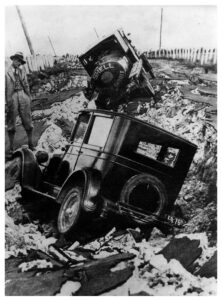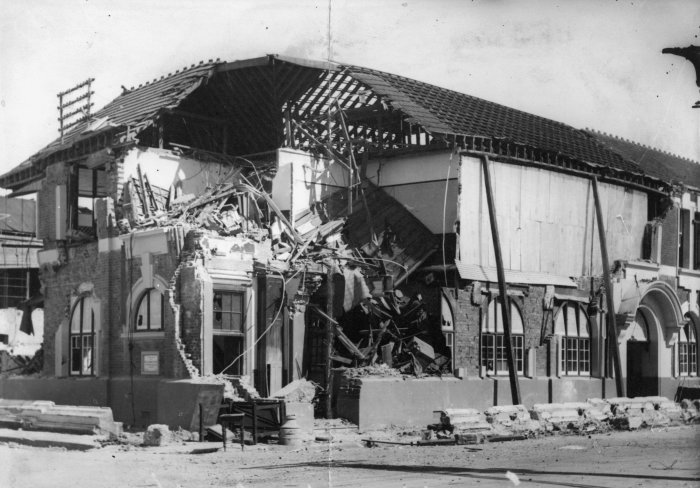AREC History

1931 Hawkes Bay Earthquake
The 1931 Hawke’s Bay earthquake, also known as the Napier earthquake, occurred in New Zealand at 10:47 am on 3 February, killing 256, injuring thousands and devastating the Hawke’s Bay region. It remains New Zealand’s deadliest natural disaster. Centred 15 km north of Napier, it lasted for two and a half minutes and had a magnitude of 7.8 Ms (7.7 Mw). There were 525 aftershocks recorded in the following two weeks, with 597 being recorded by the end of February. The main shock could be felt in much of New Zealand, with reliable reports coming in from as far south as Timaru, on the east coast of the South Island.
The Amateur Radio Emergency Corps were formed in the aftermath of the Napier earthquake of 1931. Amateur Radio Operators in the area were key in the maintaining of communications between Napier and the outside world, as the earthquake disabled the Post & Telegraph Department’s communication systems. In the months afterward groups of ‘Radio Emergency Corps’ formed around the country with the purpose of providing the means for radio communication to any part of New Zealand in an emergency. This was eventually nationalised under the NZART. The name was changed to ‘Amateur Radio Emergency Communications’ in the late 1990s to better reflect the more ‘modern’ nature of today’s communicators.
Since then, essential communications have been provided for thousands of emergency events ranging from search and rescue to natural disasters to civil emergencies.

Hastings Post Office 1931

Hawkes Bay Earthquake – Port Ahuriri -HMS Veronica at Wharf
